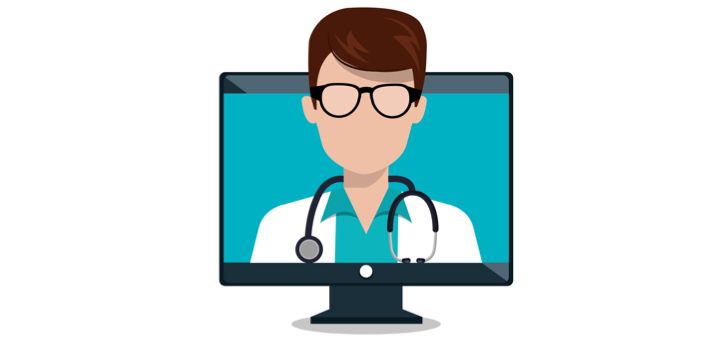Should Healthcare Treat Telehealth as Its Own Specialty?
Doctors from New York Presbyterian make the case for the “medical virtualist.”

Will telehealth someday be looked at as a medical specialty all its own? According to a pair of physicians from New York Presbyterian, it should be.
The “medical virtualist,” as they call it in a new Journal of the American Medical Association commentary, would be a physician who spends the majority or all of their time interacting with patients through technology. Because telehealth is a new medium with nuances of care delivery that fall outside of typical medical training, the new position would require a considered role and unique education.
Michael Nochomovitz, MD, co-authored the commentary with Rahul Sharma, MD, MBA. In an interview with Healthcare Analytics News™, Nochomovitz explained the new challenges that telehealth services present to traditional clinicians.
“Looking at a person…Are there any clues to suggest that somebody needs to go to the home or actually come to see the physician in the hospital, or go to the emergency room?” he gave as an example. For most doctors, the ability to remotely detect patient risk or safety through a video conference is not an intuitive one, he said. Just feeling comfortable participating in a video conversation, as many in the general population already do, does not equate to delivering medical advice in the same setting.
Another factor to keep in mind is complexity, he said. Something like a rash or rhinitis can be straightforward enough for most physicians to provide solid, comprehensive advice through telemedicine, but chronic comorbidities and in-home monitoring equipment can make interactions exponentially more difficult and risky. Telehealth can also be an advantage in that scenario, however, because a clinician working remotely may have more time to interact with the patient than they would have in a brief in-person appointment.
“I would say the more complicated this gets, and the more data that we can get from remote monitoring and tests within the home, the greater the need [becomes] for people trained to handle these conditions through telemedicine,” he said.
The need is burgeoning, he continued, because telehealth providers are already beginning to pivot toward hiring full-time remote staff. Many physicians also find telehealth-only roles attractive. In the 24 hours since the piece’s publication, he said he was already receiving a lot of correspondence. He even reported receiving a note during his interview with HCA News from a longtime family physician who was interested in the idea of medical virtualist training.
“The doctor-patient interaction, at the bedside and in an office, is a very unique and humbling experience, and one that people value,” he said. While he doesn’t think that that interaction will ever be replaced, he thinks telemedicine is going to take on an even bigger role than ever before imagined.
The path to a true, defined medical virtualist specialty would likely be a long one: Medicine would need to define core competencies, training protocol would need to be developed, and concepts would need to be defined (in their commentary, Nochomovitz and Sharma pitch the term “webside manner”). Nochomovitz expects a curriculum that would include an understanding of the technologies used to administer telehealth, the legal implications of it, and ways to ensure the care met the standard of in-person visits.
“Thought leaders and specialty societies need to get together proactively before the horse leaves the barn,” Nochomovitz said. “Put together some guidelines for this discipline, which is growing very fast. There is a need to have this conversation to avoid haphazard disruption.”
Podcast: Adoption of Healthcare Tech in the Age of COVID-19 with Dr Kaveh Safavi
June 22nd 2021Kaveh Safavi, MD, JD, global health lead of Accenture Health, discusses how the pandemic influenced the speed at which healthcare organizations adopted new technologies and how this adoption is impacting patient care.